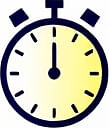Essential Energy Management Tips for Enhanced Productivity
 by Shanie Goodwin
by Shanie Goodwin
Discover practical strategies to manage your energy effectively, incorporating techniques like time blocking and hyperfocus to boost daily productivity. These tips help busy professionals and students maintain focus and achieve more with less effort.

Energy management is key to maintaining high levels of productivity in daily life. By focusing on how to sustain your mental and physical resources, you can achieve more without burning out. For instance, recognizing when your energy peaks can lead to better task allocation.
Identifying Your Energy Patterns
One way to start is by tracking your daily rhythms. Pay attention to times when you feel most alert and when fatigue sets in. This awareness allows you to align tasks with your natural cycles. For example, if mornings bring high energy, reserve that period for demanding work.
Keeping a simple log for a week can reveal patterns. Note your activities and energy levels throughout the day. This method helps in creating a routine that supports sustained output. Once you identify these patterns, you can build a schedule around them.
Incorporating Time Blocking
Time blocking involves setting aside specific blocks for tasks, which helps in preserving energy by reducing decision fatigue. Begin by dividing your day into dedicated segments for work, breaks, and rest.
For busy professionals, this technique ensures that time blocking becomes a core part of the routine. Start with larger blocks for focused work and shorter ones for lighter activities. Remember to include buffer time between blocks to allow for transitions and avoid overload.
Achieving Hyperfocus
Hyperfocus is about channeling your attention deeply into a single task, leading to efficient work sessions. To cultivate this, eliminate distractions and create an environment conducive to concentration.
Practice by selecting one task and committing to it fully for a set period. Hyperfocus sessions can last 25 to 50 minutes, followed by a short break. This approach not only boosts output but also makes work feel more rewarding.
Balancing Work and Rest
Effective energy management requires balancing activity with recovery. Include regular breaks to recharge, such as short walks or quiet moments. These pauses prevent exhaustion and maintain long-term productivity.
For students, combining study with rest periods can enhance retention and reduce stress. Aim for a mix of intense work followed by relaxation to keep energy levels steady.
Practical Tips for Daily Application
Here are some actionable steps to implement these strategies:
- Start your day with a quick review of your energy levels.
- Use tools like planners to set up time blocking schedules.
- Experiment with hyperfocus by timing your sessions and adjusting as needed.
- Stay hydrated and maintain a balanced diet to support physical energy.
- End your day with reflection to assess what worked and what needs adjustment.
By applying these tips consistently, you can see improvements in your overall efficiency. The goal is to work smarter, not harder, ensuring that your efforts lead to meaningful results.
In practice, many find that combining energy management with structured routines transforms their approach to tasks. For example, a professional might use morning high-energy periods for creative projects and afternoons for routine duties.
Over time, these habits build resilience and help in handling demands with ease. Whether you're a student or a professional, prioritizing energy leads to better outcomes and a more fulfilling routine.
